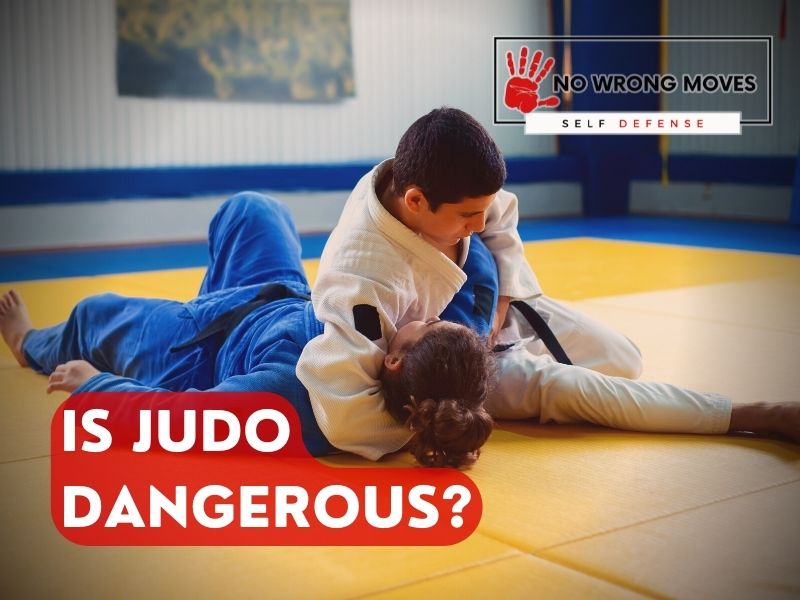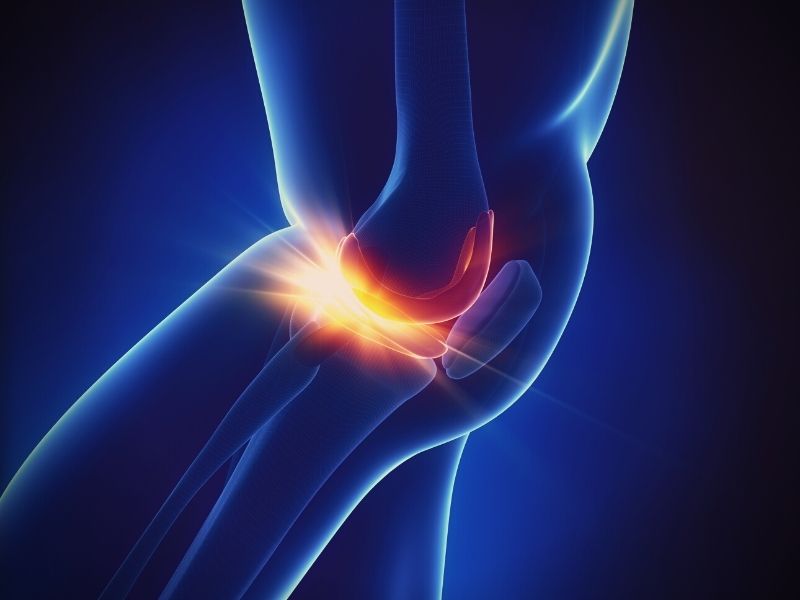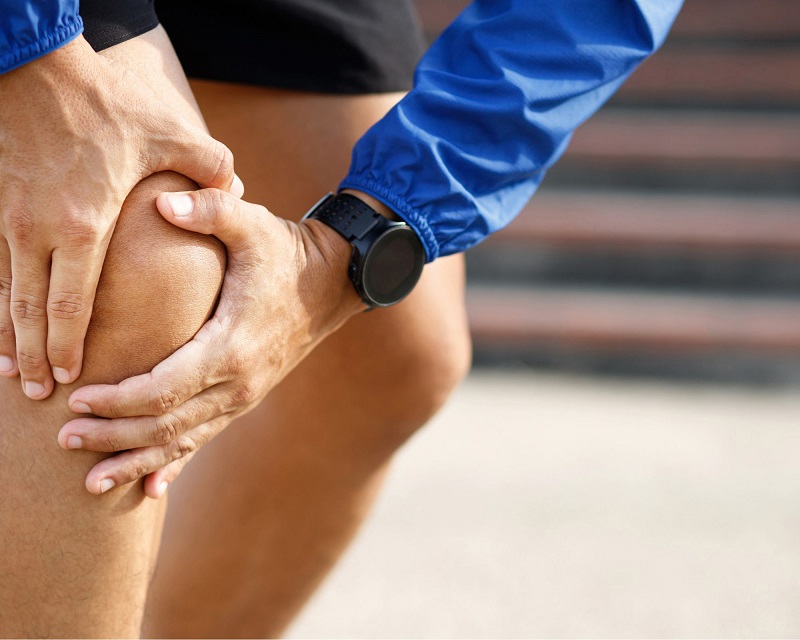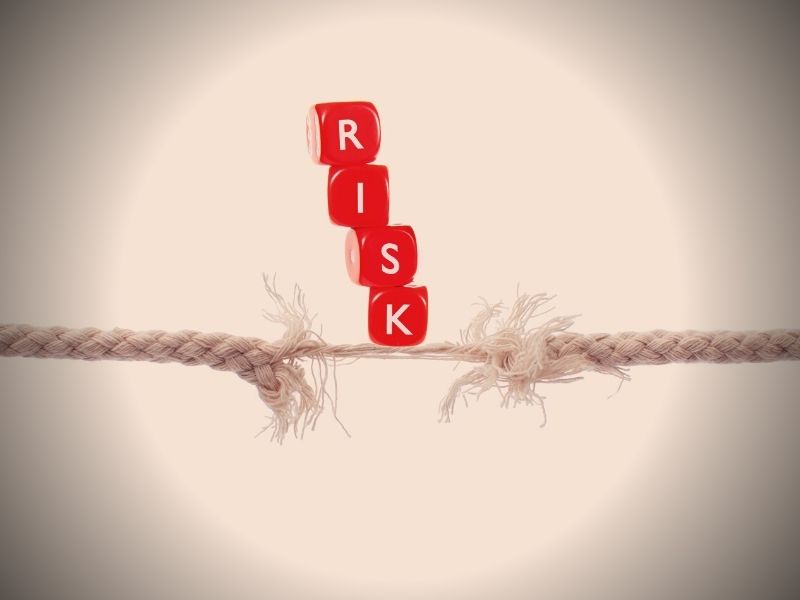
If you've been considering getting into judo for self-defense, then you've probably already wondered, "is judo dangerous?"
The good news here is, you aren't alone! Given how prevalent throws in judo are and how explosive movements can be, you're not at fault for worrying how it might hurt your body.
In fact, many people ask themselves this question before taking on martial arts in general. Thankfully, we've got everything you need to know about how safe (or dangerous!) judo is right here.
Why do judo injuries occur?

Judo injuries occur due to negligence, not knowing proper form or technique, not listening to the instructor, or simply unfortunate accidents that occur every now and then.
Concussions, broken bones, and dislocations are some of the most dangerous things you can run into in judo. Judo is a full-contact sport that involves tons of throwing and grappling, so a novice can easily run into these types of injuries if they don't practice proper safety precautions.
And that tends to be exactly what happens. Novices generally have a much higher chance of injury because they haven't fully learned ukemi, or falling techniques, yet. Judokas develop on their ukemi to the point that it becomes a reflex for them.
Breakfalls are a fundamental aspect of judo that's practically drilled into the minds of all practitioners, and for good reason!
They minimize a large amount of the risk involved when falling--which, let's face it, will happen to you all the time in judo--and will negate most of the pain you'd normally endure when you land.
I also can't stress enough how important it is to have proper protective gear, such as elbow pads, knee pads, and even a mouthguard. Judo doesn't demand much out of you when it comes to gear--there are no fancy helmets or whatnot--so what little it asks from you, be sure to give.
This also extends to training in the proper places. Judokas practice on tatami mats for a reason: they're specifically designed to absorb the impact of a fall. Trying to practice somewhere without them, such as on concrete, can lead to serious--and sometimes fatal--consequences.
In fact, if a practitioner has mastered ukemi, always wears protective gear when training, and always trains in the right places, then they've already negated most of the dangers they can run into in judo!
The most common injuries in Judo

Regardless of the precautions you take, sometimes accidents still happen. It's better for you to be well-versed in the kinds of injuries you can run into in judo so that you'll know what to expect.
Some of the most common ones are:
- Nose injuries: a fairly common injury in the sport, if you don't experience nose bleeds for yourself, then it's very likely you'll at least see them or hear about them. Thankfully, they're typically harmless, with athletes using cotton balls as a quick fix for them during competitions.
- Cauliflower ear: a particularly infamous one among judokas, hematoma auris, or cauliflower ear is exactly what it says on the tin, a deformity caused by repeated trauma to an unprotected ear.
- Concussion: one of the more serious things that can happen to you is a concussion, brain trauma caused by a sudden, powerful hit that causes your brain to go back forth. Even though judo mostly consists of throws, concussions can still happen by accident.
- Fracture: another serious injury you can get are sudden breaks in the bone. Just like a concussion, fractures can be caused by improper technique when falling. All the more reason to get your ukemi right!
As always, many of these injuries can be mitigated simply by being careful about training. For example, cauliflower ear is particularly unpleasant, but if you wear protective gear and allow your ears consistent rest, then you have little to be anxious about.
Most Vulnerable Body Parts When Practicing judo

An assessment done on judo injuries sheds some light on which body parts were most commonly injured in competitions. Elbows took the lead by a considerable margin at 14 instances. The next two most commonly injured body parts were the knees and ribs, at 7 instances each.
McDonald et al. showed in his study that the hands and feet are just as vulnerable, with majority of injuries being in this area. The elbows were still frequently damaged, however, much like in the previous study.
Body parts that were more likely to be left unscathed were the torso, followed closely by the ankle. This doesn't mean that they're safe though, as injuries there can and still do happen to some people.
Additional Risks Involved in Practicing Judo

Physical injuries aren't the only things you'll have to be careful about. Another potential danger is the risk of contracting infectious diseases, particularly in the skin. Staphylococcus infections are uncommon but not unheard of, and while harmless, they're still something you should look out for.
Perhaps among the most common infections you will run into is ringworm, distinct for the circular rashes it creates on your skin. Transmitted through germs on the ground or through contact with someone who already has it, those who aren't careful can hurt themselves and those around them.
Many of these risks can be minimized by practicing good hygiene. Remember to shower properly before and after training and to not share your belongings, like towels and water bottles. Good hygiene also includes regularly cleaning and disinfecting your training equipment.
Getting infected by something isn't likely to happen to you while training judo, especially if you already have a healthy body fit for strenuous physical exercise anyway. Still, they're a risk that needs to be aware of, and you won't hurt yourself by learning about them.
How to Stay Safe when Practicing Judo

While there are certain risks inherent in practicing Judo, these risks can always be minimized with the right knowledge. Some things to always keep in mind are:
- Always listen to what your instructor has to say.
- Properly warm up your body before each session.
- Wear proper protective gear, like knee pads and a mouthguard.
- Practice good hygiene, take showers regularly, and disinfect your training equipment.
- Avoid any risky behavior or things disallowed in the rules of the sport.
If you keep all of this in mind, then feel free to practice judo without worrying about any repercussions. Judo is an incredibly fulfilling combat sport, after all, and you deserve to enjoy it while staying safe, happy, and healthy.
The Wrap-Up
So! While Judo can be a physically demanding sport that comes with the risk of injury, it is no more dangerous than other contact sports like football or basketball. With proper training, supervision, and safety measures in place, the risk of injury you receive can be minimized.
As with any physical activity, it's well worth it to listen to your body and take necessary precautions to prevent injury. Regardless, the benefits of practicing Judo, including improved physical fitness, self-discipline, and self-defense skills, can outweigh the risks.
So if you are considering practicing Judo, don't let fear hold you back. With the right mindset and approach, you can enjoy this sport and reap its many rewards, all the while minimizing the risk of injury.
[author-box-jpx-fitness]
